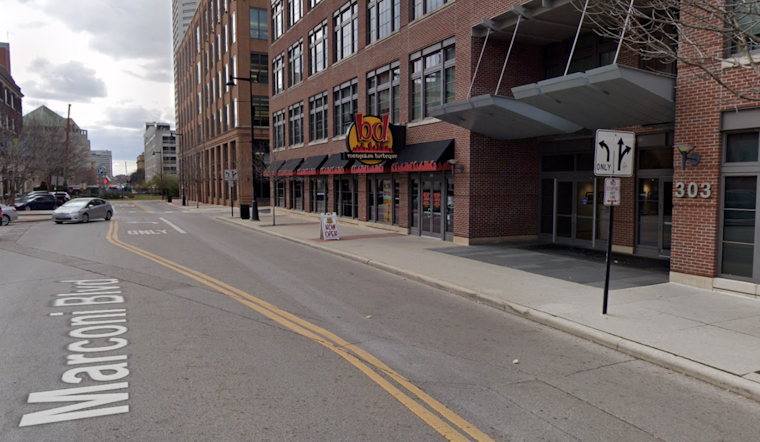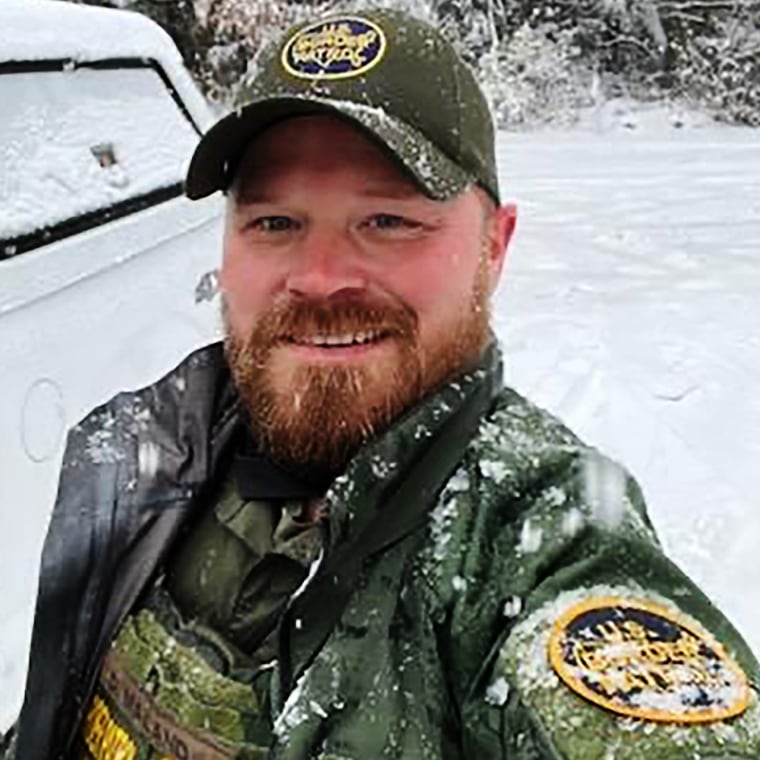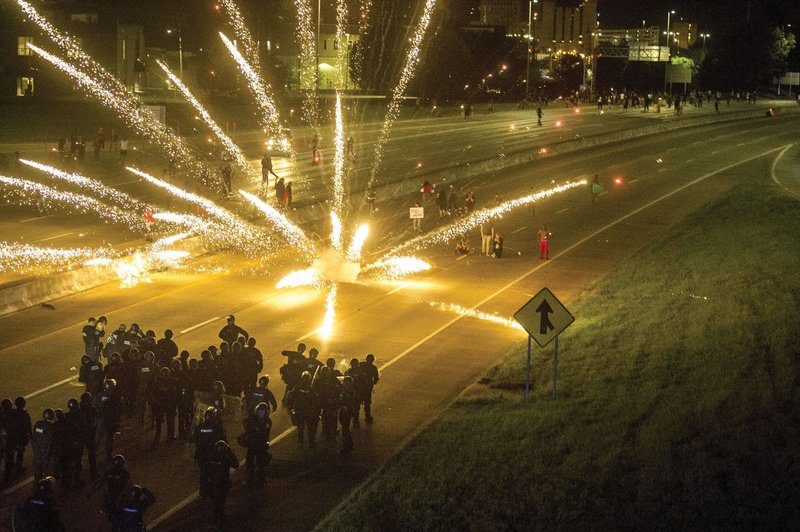

Understanding the Incident From a Legal Standpoint
The tragic death of Brianna Long in 2023 serves as a grim reminder of the tangled issues that can arise when gang disputes and stray violence intersect in our communities. As a legal professional and observer, I want to take a closer look at the unconventional twists and turns of this case through a neutral lens. With innocent bystanders caught in the crossfire and law enforcement struggling to find their way through a maze of gang-related violence, the unfolding events have left many questioning the state of public safety and accountability.
In this opinion editorial, we will dig into the details of the ongoing gang discussions, review the legal charges filed against the suspects, and ponder the implications for community safety. By examining the legal standpoints and the broader societal impacts, we can figure a path through the intimidating twists that define cases such as these.
The Tragic Circumstances Surrounding the Shooting
On October 29, 2023, Brianna Long, while working at The Pier Bar in Remerton, Lowndes County, lost her life to a stray bullet during a chaotic incident outside her workplace. The incident occurred around 2:30 a.m. when a shooting erupted at a time when the establishment was closing for the night. While another man present in the immediate area managed to survive, the loss of Long stands as a stark reminder of the serious repercussions community members can face when gang disputes spill into everyday life.
Recent law enforcement updates reveal that Tsion Clayton, aged 23, and Kimone Green, aged 21, are facing malice murder charges in connection with Long’s death. According to the Georgia Bureau of Investigation, the two individuals were not targeting Long at all; their search was directed toward another person linked to an ongoing gang dispute. This detail underscores the often unpredictable and nerve-racking consequences of gang violence, where bystanders inadvertently become victims of mistaken identity or collateral damage.
To further clarify the sequence of events, consider the following timeline:
| Date/Time | Event |
|---|---|
| October 29, 2023, ~2:30 a.m. | Brianna Long is fatally injured by a stray bullet outside The Pier Bar |
| Subsequent hours | Another man at the scene sustains injuries but survives |
| Following investigation | GBI identifies Clayton and Green as key suspects; both are already in custody for unrelated cases |
| Later announcements | Both suspects are charged with malice murder as part of a wider 44-count racketeering indictment |
This timeline highlights the intricate sequence of events that culminated in a senseless loss of life. The details expose not only the immediate confusion of that fateful night but also reveal the challenges law enforcement faces in piecing together the nitty-gritty of such incidents.
Legal Analysis of the Malice Murder Charges
From a legal perspective, the filing of malice murder charges in this case brings to the forefront the many subtle parts and complex pieces of intent, culpability, and law enforcement accountability. Malice murder, in legal terms, often implies that someone knowingly engaged in dangerous behavior that led to an unintended but fatal outcome. However, as we dig into the case details, the circumstances appear to be on edge and loaded with issues that extend well beyond a clear act of targeted violence.
An important aspect to consider is the concept of intent. The suspects, Clayton and Green, were reportedly searching for another individual connected to a gang dispute when the bullet tragically found its target. This raises pivotal questions about the fine points of criminal liability in cases where the intended victim might have been someone else. Although the legal system typically treats such incidents with the utmost gravity, we must also recognize that the overlap of criminal intent and accidental outcomes creates a tangled skein of legal challenges.
In legal terms, cases like this often involve:
- Determining whether the accused exhibited direct intent or acted recklessly.
- Assessing the impact of gang affiliations on the behavior of the suspects.
- Evaluating the degree to which collateral damage, such as that inflicted upon innocent bystanders, influences the overall culpability.
In essence, while the charges are framed within the context of malice murder, the scenario is far more complicated than a straightforward case of criminal intent. The jury and the judges must consider all of these confusing bits as they figure a path through the evidence presented in court.
Impact on Community Safety Amid Gang Disputes
This case is not just about one tragic incident; it is also a window into the broader implications of gang-related violence on our society. The violent scenes that unfold in areas once thought to be insulated from urban gang disputes indicate that gang violence is no longer confined solely to large metropolitan centers. Instead, gang conflicts have a way of spreading into smaller communities and rural localities—turning what should be safe and welcoming spaces into territories laden with hidden dangers.
In examining community safety, it is clear that this tragic incident has left an indelible mark on local residents and businesses alike. The fear and uncertainty arising from such attacks force community leaders, law enforcement officers, and policymakers to work together to manage their way through an environment that now seems more tense and on edge. Some of the challenging issues include:
- Heightened vigilance at workplaces during late-night hours
- Reassessing safety protocols in establishments vulnerable to stray violence
- Implementing community outreach programs to educate citizens about the warning signs of gang-related activity
One must consider the ripple effects on everyday life: questions regarding what can be done to prevent these incidents, how best to support victims and their families, and the necessary investment in community policing are all key aspects. Local governments and the legal system are tasked with the super important role of ensuring that all community members, regardless of their involvement or status, are protected from the dangerous spillover of such violent conflicts.
Examining the Role of Gang Violence in Rural America
Many might think that gang violence is an issue exclusive to large cities, but the reality is that even rural regions are not immune to its effects. The case in Remerton serves as a sobering example of how conflicts initiated by gang-related activities can quickly escalate and permeate neighborhoods far from urban centers. Rural America, with its smaller law enforcement forces and often stretched resources, faces unique challenges when addressing these nerve-racking incidents.
To illustrate the situation, here are some key points about gang violence in rural areas:
- Spread of Criminal Networks: Rural communities may become hubs for recruiting or connecting with larger criminal networks, exposing residents who are not used to such dynamics.
- Resource Limitations: Local law enforcement agencies may struggle to address incidents that require sophisticated investigative resources, making it more difficult to piece together the hidden complexities of each case.
- Community Trust Issues: When residents see gang disputes affecting their neighborhoods, it can erode trust in local institutions and create an environment that is overly cautious and on edge.
Moreover, the involvement of gangs in rural disputes further complicates the law enforcement response. It is not just a matter of collecting evidence and sitting through testimony; legal authorities have to work through a series of tangled issues that include inter-jurisdictional cooperation, specialized investigative techniques, and community relations.
Ultimately, to get into a comprehensive analysis of such cases, one must consider not only the criminal acts themselves but also the subtle parts of community behavior that change as a result. After all, the presence of gang violence shapes community policies, business operations, and the everyday routines of residents trying to keep their families and livelihoods safe.
Managing the Law: The Challenges of a Racketeering Indictment
Adding another layer of complexity to the case is the 44-count racketeering indictment that encompasses seven defendants, including Clayton and Green. This indictment is not only charged with multiple crimes including robbery, assault, and murder but also serves as an example of how loaded legal charges can intertwine with gang-related disputes. The indictment specifically accuses individuals of being active participants in a gang based in Valdosta known as 528.
For legal professionals and community members alike, the racketeering indictment presents several off-putting challenges, including:
- Multiplicity of Charges: The inclusion of various offenses under the umbrella of racketeering can make it intimidating to discern the fine points of each charge. From murder to assault, the breadth of crimes covered under this indictment brings confused bits of evidence and testimonial accounts into the courtroom.
- Interconnected Criminal Activity: Gang activity, particularly in small communities, rarely adheres neatly to the boundaries of a single jurisdiction or crime. Those accused by the indictment are alleged to have participated in a series of actions that span multiple areas of criminal behavior, making it considerably nerve-racking for prosecutors to present a coherent narrative.
- Impact on Innocent Individuals: With every new charge and investigation, there is a risk of affecting individuals who have minimal or no direct involvement in criminal activity, as was the case with the innocent bystanders caught in the crossfire during the incident at The Pier Bar.
Legally speaking, the indictment serves as both a tool for accountability and a warning about the perils of entangling oneself in the dangerous networks of gang-related activities. It is essential for the justice system to work through these twisted issues carefully, ensuring that while justice is served, the nuances of intent and collateral damage are preserved in legal proceedings.
Piecing Together the Fine Points of Responsibility
One of the lingering questions that continues to spark debate is how to effectively assign responsibility when unintentional victims are involved. Brianna Long’s case is a classic example of this dilemma. Although she was not the intended target of the shooting, her death has resulted in malice murder charges against the suspects who were pursuing another individual.
This situation forces us to consider the following key factors:
- The Role of Intent: Legal professionals must determine if the intent to harm another person is sufficient to establish direct culpability for all outcomes, including unintended deaths.
- Collateral Consequences: When violent acts aimed at one individual inadvertently take a more tragic toll, the legal consequences become a matter of both moral and judicial scrutiny.
- Community Impact: The repercussions of such incidents extend far beyond the legal arena. They affect the trust that community members have in their environment, leaving lasting scars on the social fabric.
As we poke around these challenging problems, it becomes clear that legal systems must incorporate a multifaceted approach. This involves not only following the straightforward application of the law but also comprehending the little twists and subtle distinctions that influence the outcomes of each case. The dialogue between law enforcement, the judiciary, and community leaders is therefore critical in ensuring that the rights of all citizens are upheld, and justice is administered fairly.
Key Points in Legal Accountability and Community Protection
In the wake of this sorrowful and nerve-racking incident, several essential steps need to be considered to ensure that similar tragedies can be prevented. Both legal accountability and proactive community protection play super important roles in responding to gang-related violence. Here are some key points to consider:
- Effective Coordination Among Law Enforcement: Agencies need to work closely together when incidents cross jurisdictional boundaries. This requires practical communication channels and shared resources, especially in cases involving multiple charges like racketeering.
- Supporting Victims and Families: Beyond legal proceedings, it is essential to ensure that the families of victims receive the necessary support services, ranging from counseling to financial assistance, to help them recover from their loss.
- Community Outreach and Education: Educating the public about the early warning signs of gang activity and offering safe channels for reporting suspicious behavior can help in the early detection of potential violent escalations.
- Judicial Fairness and Transparency: Maintaining a clear and unbiased judicial process is key to preserving public trust. Transparency in the handling of gang-related charges is necessary for both community reassurance and the integrity of the legal system.
These practical steps, when implemented effectively, may help communities make their way through the tangled legal paths and complex socio-cultural challenges posed by gang violence.
Strategies to Prevent Tragic Misunderstandings in Gang-Related Violence
While the detailed legal implications of Brianna Long’s tragic death continue to be evaluated in courts and public discourse, it is equally essential to consider broader strategies aimed at preventing such occurrences in the future. Drawing on both community insights and legal expertise, several recommendations emerge that can help steer through the complicated landscape of gang disputes and public safety:
- Enhance Community Policing Initiatives: Investing in community policing can build stronger relationships between law enforcement and residents. This deeper bond encourages citizens to share critical information that might prevent violent outbreaks.
- Increase Funding for Local Investigations: Rural and small-town law enforcement agencies must have access to the specialized resources required to piece together evidence in cases involving gang violence. Better technology, forensic tools, and training can help tackle the tricky parts of these investigations.
- Promote Youth Engagement Programs: Redirecting at-risk youth away from the pull of gang activities through education, mentorship, and career opportunities can reduce the violent spillover effects in community settings.
- Encourage Transparency and Public Reporting: Keeping the public informed about ongoing investigations and safety tips empowers citizens and reinforces a collective approach to community safety.
By taking these steps, the community can work together to find a path through the nerve-racking legal debates and social challenges that gang violence poses, ensuring that tragedies like the untimely death of an innocent bartender can be prevented in the future.
The Role of Public Discourse in Shaping Legal Outcomes
Public opinion and media coverage often play a key role in shaping legal outcomes, particularly in cases that involve gang violence and high-profile charges such as malice murder and racketeering. Balanced and fact-based reporting is essential—not only for informing the public but also for holding legal authorities accountable for their decisions and actions. While some media narratives may lean toward sensationalism, a careful and measured approach is necessary to avoid distorting the subtle details of legal accountability.
Our society benefits when discussions about such tragic events involve all facets of the issue—from the immediate consequences of the crime to the underlying community tensions that allowed it to take place. Legal experts, community leaders, law enforcement, and the media each have a responsibility to work through the tangle of issues with honesty, ensuring that the public remains informed without being overwhelmed by off-putting or scaring language.
When debates and discussions are anchored in facts and free from inflammatory rhetoric, we stand a better chance of identifying practical ways to reduce the risk of future tragedies. Public discourse must remain a platform where complex legal matters are broken down into understandable pieces and where the community can actively participate in shaping safer public policies.
Community and Legal System: Working Through the Twists and Turns
The pressing question remains: how can we, as members of society, help create an environment that minimizes the risk of such unpredictable violence? The answer lies in a combined effort by the community and the legal system. While legal authorities must do their utmost to hold perpetrators accountable and to work through the many tangled legal pieces, community members can contribute by adhering to best practices for safety and by supporting local initiatives that address gang-related issues.
A cooperative approach might involve the following strategic initiatives:
- Community Forums: Regular town hall meetings allow citizens to get into and discuss safety issues openly. These forums enable law enforcement officials to share updates on ongoing investigations and for community members to relay their concerns.
- Enhanced Surveillance and Reporting: Installing community-driven surveillance systems can help deter criminal activity, while establishing anonymous reporting platforms can encourage more residents to share suspicious details.
- Cross-Jurisdictional Collaborations: In incidents that involve gang disputes that span multiple areas, fostering closer collaborations between local police departments, state agencies, and even federal bodies becomes a must-have measure for coordinating swift and effective action.
- Educational Workshops: Hosting regular sessions on legal rights and safety procedures empowers community members. When citizens know what to do or whom to contact in emergencies, they can better steer through problems before they escalate.
It is clear that when the community and the legal system find their way to work together, they can help mitigate the risks of otherwise overwhelming gang-related incidents. The implementation of these strategies not only bolsters immediate public safety but can also provide a long-term framework that addresses the underlying issues fueling community violence.
Learning from Tragic Events: A Call to Action
Every tragic incident, such as the inadvertent killing of Brianna Long, carries within it lessons that are both heartbreaking and instructive. For legal professionals, community leaders, and policymakers alike, these events are more than isolated episodes—they are call-to-action signals that highlight the pressing need for reform, better resource allocation, and smarter community planning.
To summarize some of the key takeaways from this unfortunate case:
- The importance of understanding and addressing the subtle parts of criminal intent in gang-related violence.
- The critical role of coordinated efforts between multiple law enforcement agencies when piecing together evidence that spans several jurisdictions.
- The need for community engagement and open dialogue to enhance public safety and prevent misdirected violence.
- The reconsideration of legal definitions and charges, so that those inadvertently affected by criminal activities receive proper justice and support.
These issues are not only legal puzzles to be solved in a courtroom—they are societal challenges that demand our full participation. As we figure a path through the confusing bits left in the wake of violence, it is incumbent upon all of us to take the lessons of this tragic incident and apply them to create safer, more responsive communities.
Taking a Closer Look: The Intersection of Law Enforcement and Community Resilience
At its heart, the case of Brianna Long is a poignant example of how intertwined the responsibilities of law enforcement and community resilience truly are. The legal charges against those implicated in a broader gang system such as the 528 gang highlight the fine balance between ensuring justice and preventing further harm to innocent bystanders. When law enforcement uses comprehensive indictments like the 44-count racketeering case, it sends a clear message that gang-related crimes carry severe consequences.
Yet, we must also acknowledge the challenges of making your way through a legal system that is itself laden with overwhelming, off-putting layers of bureaucracy and procedural twists. The following table encapsulates the key stakeholders and their respective roles in addressing the situation:
| Stakeholder | Role |
|---|---|
| Georgia Bureau of Investigation (GBI) | Conducting the investigation, coordinating arrests, and building a case against the suspects. |
| Local Law Enforcement | Initial response and security management in the affected community. |
| District Attorney’s Office | Prosecuting cases, presenting evidence, and ensuring a fair judicial process. |
| Community Leaders | Facilitating open dialogue, supporting victims, and implementing safety measures. |
| Media Outlets | Reporting objectively on the incident and raising public awareness without inflaming tensions. |
This cooperative framework underscores the must-have necessity for all parts of society to work together in managing their way through violence and its aftermath. A successful outcome in such cases depends not only on the strength of the legal evidence but also on the community’s ability to rally around a shared mission of safety and justice.
Reflecting on the Broader Legal Landscape
While the emotional toll of witnessing gang-related violence is undeniably heavy, the legal landscape offers us a guide to understanding and mitigating its impacts. The case at hand serves as an opportunity to re-examine laws pertaining to malice murder, racketeering, and the responsibilities of those involved in violent conflicts. Such an examination challenges us to look at the hidden complexities of legal accountability and question whether current statutes fully cover the subtle parts of unintended harm caused in volatile situations.
Legal historians and practitioners alike have long debated the fine shades of responsibility in incidents where wrongful death occurs as a result of misdirected violence. The discussion extends beyond simple categorizations of guilt, instead requiring us to consider:
- How the law defines intent versus recklessness;
- What constitutes sufficient evidence to support severe charges in multifaceted gang disputes;
- How collateral damage should influence sentencing and verdicts;
- The need for legal reforms that provide better protection for innocent bystanders.
As we work through these challenging questions, it is essential for lawmakers to remain open to reviewing and updating legislation. Enhancing public safety means not only punishing those who cause harm, but also reinforcing the systems that prevent such harm from occurring in the first place.
A Neutral Perspective on a Tense Issue
It is important to emphasize that the discussion presented in this editorial is intended to be neutral, focusing on the objective assessment of legal facts and community impacts. The discussion is not meant to cast aspersions or to sensationalize the harrowing details of the incident. Instead, it seeks to piece together the available evidence and to provide a space for rational debate among citizens, legal experts, and public officials.
By taking a measured approach and examining the case through various lenses—legal, societal, and communal—we can better figure a path for addressing the tangled issues posed by gang violence. This balanced perspective is essential both for those directly involved in the case and for the broader public as we strive to create safer environments.
Conclusion: Charting a Course for a Safer Future
The tragic events that led to the death of Brianna Long remind us that behind every headline lies a constellation of issues—legal challenges, community safety concerns, and the unpredictable outcomes of gang disputes. As we digest the detailed legal charges and review community responses, it is incumbent on all of us to steer through these complicated pieces with a clear understanding of both the causes and possible solutions.
Moving forward, we must reinforce the collaboration between law enforcement, policymakers, and the community. It is only by working together—sharing information, supporting victims, and continually reviewing our legal frameworks—that we can hope to reduce the impact of gang violence and prevent future tragedies.
In a time when our social fabric is increasingly loaded with problems and the consequences of violent disputes echo across both urban and rural landscapes, it is super important to remain engaged in constructive dialogue and informed action. Let us take this example as a call to action, a catalyst for change that compels us all to manage our way through the nerve-racking twists of modern legal and social challenges, and ultimately, to create a future where every member of our community feels safe and valued.
Originally Post From https://www.wymt.com/2025/02/28/2-charged-after-woman-dies-after-being-hit-by-stray-bullet-bar-job/?outputType=amp
Read more about this topic at
Youth Gangs and Violence
Gang News



















 Apologies, but you haven't shared the main article content to be rewritten. Could you please provide that so I can help you with your request?
Apologies, but you haven't shared the main article content to be rewritten. Could you please provide that so I can help you with your request?